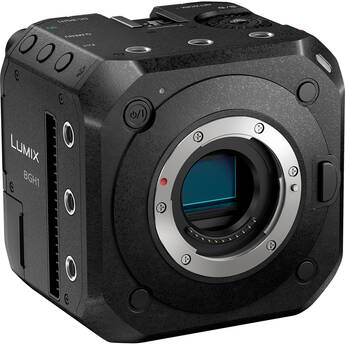Panasonic LUMIX BGH1 Announced – Box-style Camera With MFT Sensor
Panasonic has just announced a new box-style mirrorless camera: the Panasonic LUMIX BGH1. This camera is designed for video shooting and no stills photography, emphasizing streaming/ broadcasting/multi-camera shooting capabilities. It features a Micro Four Thirds lens mount, a 10.2MP Live MOS sensor with dual native ISO, similar to the one found in the LUMIX GH5S. It can record in C4K/4K at up to 60 fps, and up to 240 fps in FHD. Let’s take a closer look at this new compact and lightweight camera!
The new LUMIX DC-BGH1 is Panasonic’s first take at creating a smaller and even more compact mirrorless camera with a four-thirds sensor. But, the Panasonic LUMIX DC-BGH1 is not a hybrid camera; it’s designed for shooting video.
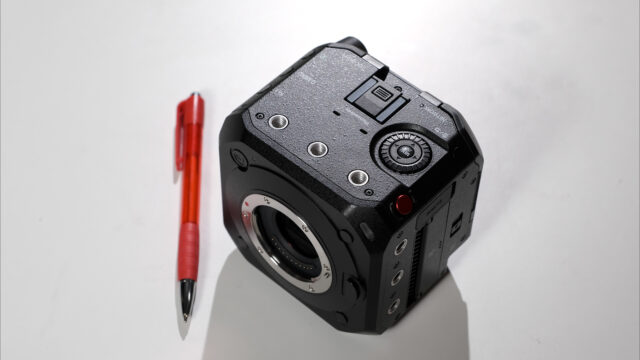
Panasonic LUMIX BGH1 – GH5S with a New Form Factor
This camera features the same sensor as the GH5S, which is a 10.2MP Live MOS sensor with multi- aspect and dual native ISO (V-Log L: ISO 400 & 2,000, HLG: ISO 320 & 1600, Cinelike: ISO 160 & 800). The general ISO range is from 160 to 51,200. The image processor is a Venus Engine, similar to the one in the GH5S, too.
However, the LUMIX BGH1 has a smaller form factor than the GH5S and the sensor / processor are optimized to work in video mode. According to Panasonic, the camera has been designed for a vast range of applications, including streaming, events, documentary, cinema and traditional broadcast shooting. Due to its small weight it can also be used on drones.
Panasonic EVA1 Camera Primer
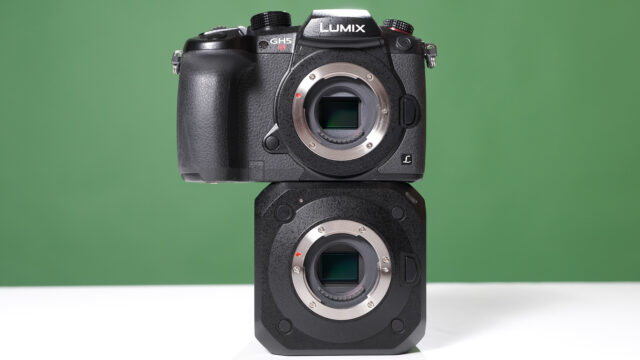
Panasonic LUMIX BGH1 – Recording Modes
The Panasonic LUMIX BGH1 can record internally in C4K/4K at up to 60 frames per second in 4:2:0 10-bit Long GOP form (and 4:2:2 10-bit All intra up to 30fps). The camera has two SD card slots and offers relay/back up/Allocation recording. If you drop down the resolution to FHD, you can crank up your frame rate to up to 240 fps. Mind you that the angle of view will change when filming over 201 fps and the image will crop.
Various picture profiles are available, including Hybrid Log Gamma (HLG) compatible with ITU-R BT.2100 colorspace. You can also record internally in C4K/4K HEVC/H.264 or H.265 (recording settings related). A V-Log L picture profile is pre-installed, and Panasonic claims a maximum Dynamic Range of 13 stops (we already have the camera in-house and will present our Lab test findings soon).
For even greater usability, you can record externally. The camera is capable of outputting a C4K/4K 4:2:2 10-bit signal over HDMI. It is also the first LUMIX camera that can output the video signal to HDMI and SDI simultaneously. (HDMI, 4K 60p 4:2:2 10-bit, SDI, up to FHD 60p 4:2:2 10-bit).
Like with its LUMIX GH5S sibling, the new LUMIX BGH1 includes an anamorphic mode (4K 3328×2496 up to 50p).
The camera’s body is made of aluminum plus magnesium alloy to disperse heat in conjunction with a new heat dispersion structure that allows unlimited video recording times and no overheating issues.
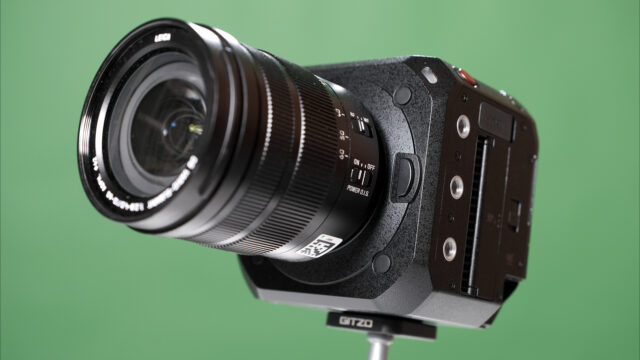
Autofocus Capabilities
It seems like Panasonic put a lot of effort into improving the autofocus capabilities of the LUMIX BGH1. According to the company, the camera features an “advanced deep learning technology” capable of detecting humans and animals.
For humans, the camera can recognize the eye, face, body and head separately. On paper, it can track the subject if he/she moves, turns his back to the camera, or moves away from the camera.
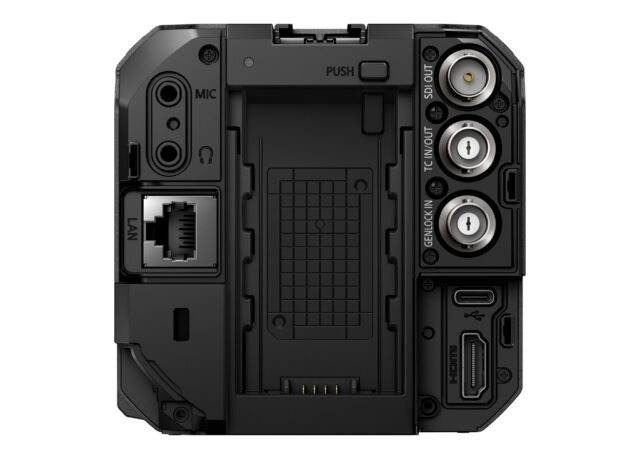
Input/Output Ports and Connectivity
The Panasonic LUMIX BGH1 features a lot of input/output ports, including:
- One USB 3.1 Type-C port
- A 3G-SDI output connector
- One HDMI Type-A output connector
- A 3.5mm microphone input and a 3.5mm headphone jack (the LUMIX BGH1 is compatible with the DMW-XLR1 unit that gives you access to two XLR ports)
- A 2.5mm port for a generic remote control unit (LANC)
- A Gen Lock IN and Timecode IN/OUT port
- One ethernet port with Power over Ethernet capabilities (PoE+)
As you can see, the LUMIX BGH1 has nearly every input/output port you can think of. But, the camera is also capable of wireless connectivity with 2.4GHz Wi-FI connectivity and Bluetooth 4.2.
Some of the above mentioned connection ports are mandatory as the camera doesn’t have any built-in monitoring functionality. Also, bear in mind that since this camera is targeting “Business to Business” customers mostly, it will come WITOUT a battery or charger included.
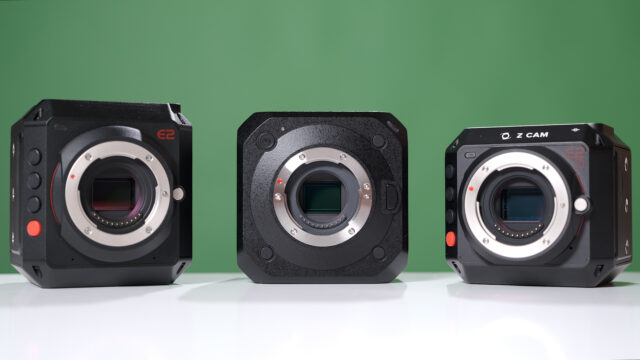
Remote Control Capabilities
For live recordings or broadcast events, you can control a maximum of 12 LUMIX BGH1 simultaneously via the Panasonic PC software LUMIX Tether. This software allows you to take pictures, even if it’s a video-centric camera. Also, to get all LUMIX BGH1 cameras in perfect synchronization, the LUMIX Sync software can help.
There are two tally lamps (one in the front and one at the back of the camera) and a network connection lamp. This feature is handy if multiple camera operators are working with you, so everyone knows when they are live or not.
For further control, an SDK for camera control via USB will be provided by Panasonic for free. The SDK will be released for owners of compatible LUMIX cameras (BGH1, S1, S1R, S1H, S5, GH5S, GH5, G9) on October 14th. Check out Panasonic’s site by clicking here.
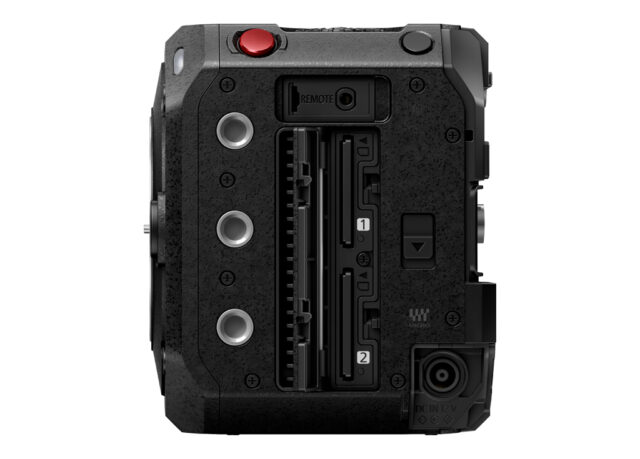
Pricing and Availability
The Panasonic LUMIX BGH1 will be available at the end of October for $1,999 (or 2,099 Euro excluding VAT). This small-form-factor camera could be great for you if you are often shooting live events or are in the need for a lightweight multi-camera setup. I also see the BGH1 as a “Z-Cam/RED Komodo-type” offer from Panasonic, used by indie filmmakers and one-man-band filmmakers.
What do you think about this new Panasonic Micro Four Thirds camera? Will you consider getting it for multi-camera configurations? Don’t hesitate to let us know in the comments below!
